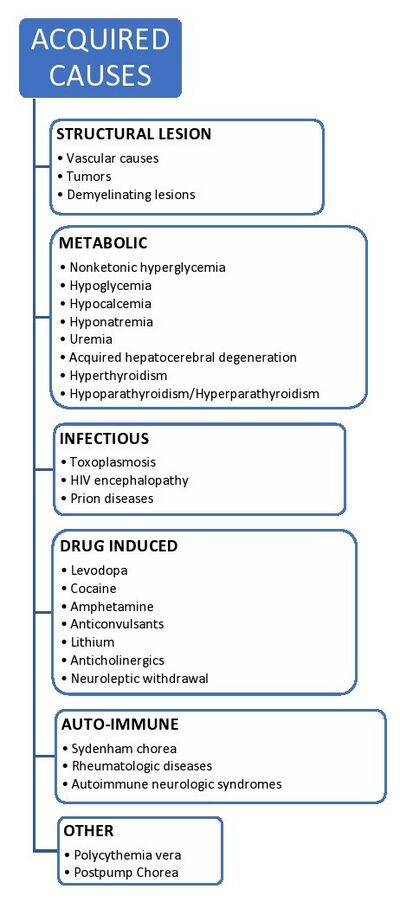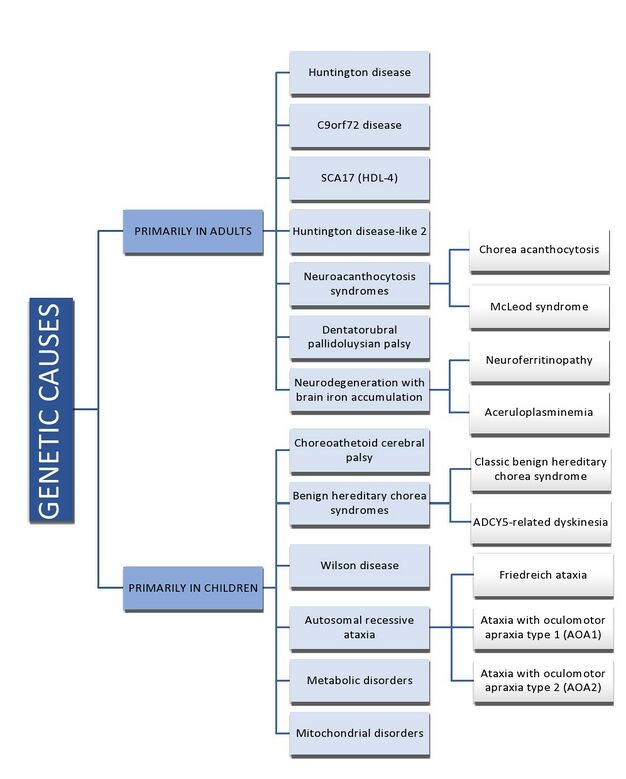Chorea: Difference between revisions
No edit summary |
(added info) |
||
| Line 19: | Line 19: | ||
== Phenomenological Features == | == Phenomenological Features == | ||
* Randomness | * '''Randomness''' | ||
* Flowing Quality | * '''Flowing Quality''' | ||
* Parakinesia | * '''Parakinesia'''-Patients blend their chorea induced movements with their own normal movements. | ||
* Motor impersistence | * '''Motor impersistence'''- patient is unable to perform sustained motor activities. | ||
* Ballism | * '''Ballism'''- Variant of chorea which shows large-amplitude flinging movements involving proximal extremities. | ||
* Athetosis | * '''Athetosis'''-Slow writhing movements involving distal limbs sometimes may be face. | ||
* Varying velocity of movements | * '''Varying velocity of movements'''-quick velocity and low- amplitude movements accompanied by jerks. | ||
{{#ev:youtube|RxWEilu-Mf4}} | {{#ev:youtube|RxWEilu-Mf4}} | ||
| Line 32: | Line 32: | ||
== Diagnosis == | == Diagnosis == | ||
=== Differential Diagnosis === | |||
== Management == | == Management == | ||
Revision as of 16:38, 2 August 2022
Introduction[edit | edit source]
The word Chorea has Greek origins meaning "to dance". It has a dance-like appearance due to the random and flowing quality of the movement. Chorea is a type of hyperkinetic movement disorder. The involuntary movements flow from one body area to another which cannot be predicted beforehand.
Causes[edit | edit source]
They are predominantly of 2 types
- Acquired Causes
- Genetic Causes
Phenomenological Features[edit | edit source]
- Randomness
- Flowing Quality
- Parakinesia-Patients blend their chorea induced movements with their own normal movements.
- Motor impersistence- patient is unable to perform sustained motor activities.
- Ballism- Variant of chorea which shows large-amplitude flinging movements involving proximal extremities.
- Athetosis-Slow writhing movements involving distal limbs sometimes may be face.
- Varying velocity of movements-quick velocity and low- amplitude movements accompanied by jerks.
This video displays the dance-like movements performed by a patient.








